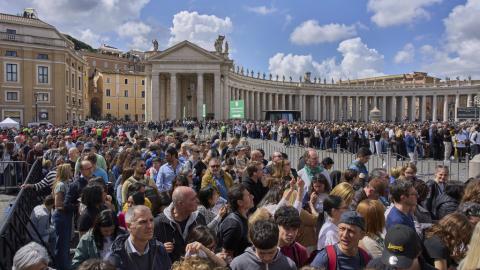Supreme Court Reveals a 3-3-3 Divide as Major Abortion Case Hangs in the Balance
WASHINGTON - The Supreme Court is made up of a majority of conservative justices, but this latest term has taught Americans that not all conservatives are created equally. Instead of a 6-3 divide between conservative and liberal justices, some of the court's major decisions reveal a 3-3-3 divide.
"I think the most conservative members are Justice Thomas and next Justice Gorsuch, and close by probably Justice Samuel Alito," Josh Blackman, professor at South Texas College of Law in Houston, tells CBN News.
In the middle, making up a more centrist coalition, he says, are Chief Justice John Roberts, Justice Brett Kavanaugh, and the court's newest member Justice Amy Coney Barrett.
"We learned that Justice Amy Coney Barrett was not the judicial torpedo that a lot of Democrats thought that she was going to be on things like Obamacare," Sarah Perry, legal fellow at The Heritage Foundation, told CBN News.
In that case, led by the more centrist conservatives, the court chose consensus over striking at the heart of the matter.
Likewise, in Fulton vs. City of Philadelphia, the court ruled unanimously that the city was discriminating against a Catholic foster care agency, Catholic Social Services, but stopped short of addressing the larger issue of religious liberty.
That led a frustrated Justice Samuel Alito to write, "This decision might as well be written on the dissolving paper sold in magic shops."
"Their job is to decide whatever case is before them and not create these cockamamie schemes of what may happen in a decade. I think that is a flawed understanding of judicial power," says Blackman, who is also an adjunct scholar at the Cato Institute.
A recent Gallup Poll shows 49-percent of Americans approve of the job the Supreme Court is doing. That's the lowest rating since 2017, but Republicans and Democrats view it similarly revealing Americans are both pleased and frustrated with its rulings.
Finding that equilibrium of public opinion is what some observers say drives the middle of the court to issue narrow opinions and decline some controversial issues.
Roberts, Kavanaugh, and Barrett joined the three liberal justices to refuse hearing the case of Barronelle Stutzman, a Washington florist who's being forced to use her "art" to celebrate a same-sex marriage.
Meanwhile, Gorsuch joined the three centrists to block hearing a transgender bathroom case out of Virginia.
"The court's conservatives - at least three or four of them - do not want to get bogged down in the transgender issue. I think they want to stay away from it. I think they hope it just goes away and disappears, but you know, and I know these things just don't vanish, they just brew up and develop controversy year after year," adds Blackman.
Still, next term the court will tackle several hot-button issues like New York's handgun law, and an abortion case of out Mississippi that strikes at the heart of Roe versus Wade.
"The fact that they have relegated this decision on whether or not pre-viability restrictions are constitutional indicates to us that they are going directly to the heart of the matter and will make a determination as to whether or not Roe was good law," explains Perry.
So how will this new alignment on the court play out? Blackman has a prediction.
"I don't think there are enough judges with the backbone to do it."
***Please sign up for CBN Newsletters and download the CBN News app to ensure you keep receiving the latest news from a distinctly Christian perspective.***





